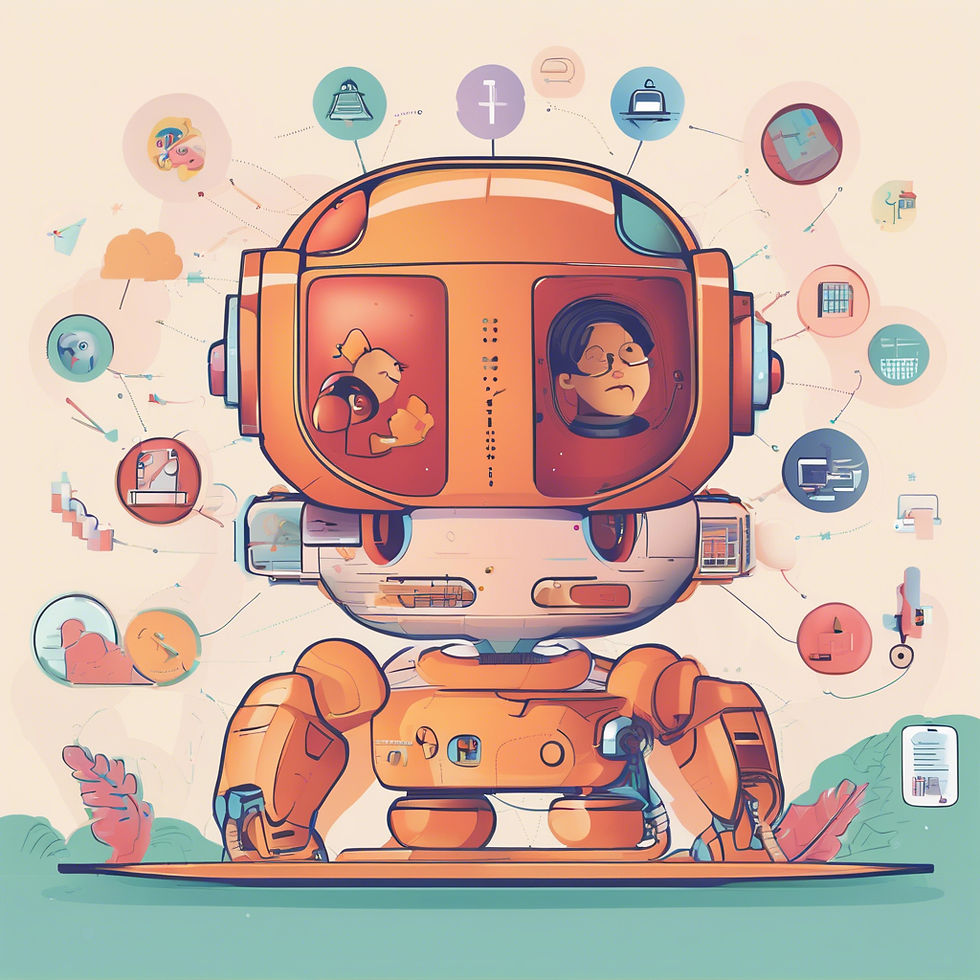Ambient Agent Architecture: The Future of Intelligent, Context-Aware Systems
- Jone

- Feb 25
- 3 min read
Imagine walking into your home after a long day, and without a single command, the lights adjust to your preferred evening setting, your favorite music starts playing softly, and the thermostat sets to your ideal temperature. This seamless, intuitive experience is made possible by Ambient Agent Architecture—a sophisticated framework that enables devices to anticipate and respond to your needs by understanding context and environment.

The Essence of Ambient Agent Architecture
At its core, Ambient Agent Architecture is about creating an environment where technology fades into the background, yet remains acutely aware of and responsive to human presence and activities. This involves integrating multiple devices and services through artificial intelligence to work cohesively, offering capabilities far beyond any single device.
Example: Consider a smart kitchen equipped with sensors and AI. As you begin cooking, the system detects your actions, suggests recipes based on available ingredients, adjusts cooking times, and even sets timers automatically. All these actions occur without explicit commands, enhancing convenience and efficiency.
The Role of Multimodal AI in Ambient Agents
To achieve such fluid interactions, Ambient Agent Architecture relies heavily on Multimodal AI—systems that can process and integrate data from various sources like text, images, audio, and video. By combining these inputs, multimodal AI provides a comprehensive understanding of the environment, enabling more accurate and context-aware responses.
Example: In a smart healthcare setting, multimodal AI can analyze a patient's speech patterns, facial expressions, and vital signs simultaneously. This holistic assessment allows for early detection of health issues, such as identifying signs of a stroke or cardiac event, and prompts immediate medical intervention.
Key Components of Ambient Agent Architecture
Perception: Sensors and devices collect data from the environment, such as motion detectors, cameras, microphones, and temperature sensors.
Example: A smart thermostat uses temperature and occupancy sensors to determine if a room is unoccupied and adjusts the heating or cooling accordingly to save energy.
Processing: Advanced AI algorithms analyze the collected data to interpret context and predict user needs.
Example: Voice assistants like Amazon's Alexa process audio inputs to understand and execute voice commands, learning user preferences over time to provide personalized responses.
Action: The system executes appropriate responses based on its analysis, interacting with various devices to perform tasks.
Example: Upon detecting that you've started watching a movie, the system dims the lights, closes the blinds, and adjusts the surround sound settings for an optimal viewing experience.
Why Ambient Agent Architecture Matters
The integration of Ambient Agent Architecture into daily life offers several significant benefits:
Enhanced User Experience: By anticipating needs and automating tasks, these systems reduce the cognitive load on users, making interactions with technology more natural and enjoyable.
Increased Efficiency: Automation of routine tasks saves time and energy, allowing individuals to focus on more meaningful activities.
Improved Accessibility: For individuals with disabilities, ambient agents can provide tailored assistance, such as adjusting interfaces for better accessibility or offering real-time translations for the hearing impaired.
Example: In an office setting, ambient agents can monitor meeting schedules and automatically prepare conference rooms by setting up necessary equipment, adjusting lighting, and ensuring optimal room temperature before participants arrive.
Challenges and Considerations
While the potential of Ambient Agent Architecture is vast, several challenges must be addressed:
Privacy Concerns: Continuous data collection raises questions about user privacy and data security. Ensuring that data is handled responsibly and transparently is crucial.
Interoperability: With a multitude of devices and platforms, achieving seamless communication between different systems requires standardized protocols and collaboration among manufacturers.
Ethical Implications: As systems become more autonomous, defining the boundaries of decision-making authority and ensuring ethical behavior in AI actions is essential.
Example: In healthcare, while ambient agents can monitor patient health, it's vital to establish clear guidelines on data usage, consent, and the extent of automated medical interventions to protect patient rights and well-being.
The Road Ahead
The evolution of Ambient Agent Architecture is poised to transform how we interact with technology, making it more intuitive and integrated into our daily lives. As advancements continue, we can expect environments that not only respond to our commands but also anticipate our needs, creating a harmonious blend of human and machine interactions.
This article was crafted in collaboration with a Large Language Model (LLM), showcasing the synergy between human insight and AI in content creation.
References



Comments